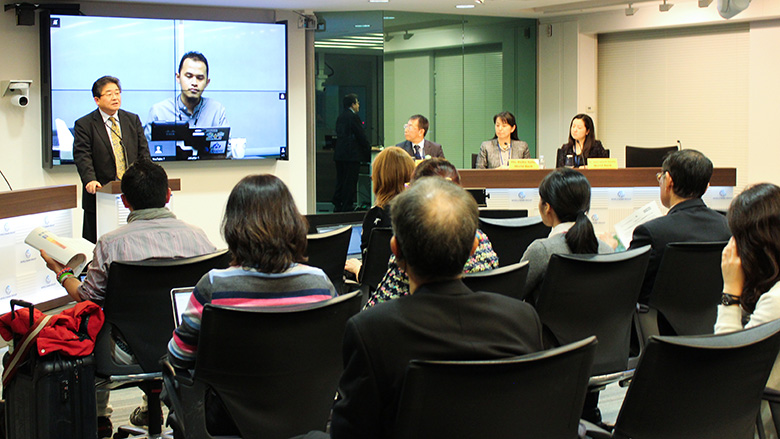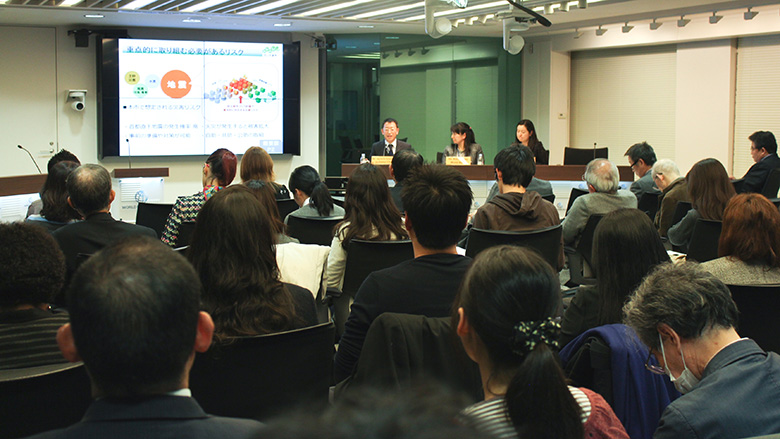The World Bank Disaster Risk Management (DRM) Hub, Tokyo, promotes sharing Japan’s DRM-related knowledge and expertise with developing countries. As a part of the program, the DRM Hub has developed a Technical Handbook on how to create Seismic Preparedness Maps, which help increase local communities’ understanding of potential risks from earthquakes and tsunamis and facilitate proactive preparations for evacuation.
To mark the completion of this handbook, the 16th DRM Seminar was held and focused on challenges faced by developing countries communicating disaster risk and lessons from Japan’s experience in developing Seismic Preparedness Maps.
Challenges faced by developing countries and the World Bank’s initiatives
In his opening remarks, Mr. Yasusuke Tsukagoshi, Special Representative, Japan, World Bank Group, pointed out challenges faced by developing countries. These include a shortage of hazard and geographical information necessary for DRM, and restrictions on sharing such information with local residents. Taking into account developing countries’ interest in improving the current situation, he expressed his expectation that this recently completed handbook would provide them with a practical guideline.
Ms. Keiko Saito, Disaster Risk Management Specialist, Global Facility for Disaster Reduction and Recovery (GFDRR), World Bank, gave a presentation on approaches taken in Japan to create Seismic Preparedness Maps and the lessons learned from the approaches, which were developed into this technical handbook. She stated that nationwide efforts had been made in Japan to disseminate scientifically identified disaster risks to residents in understandable ways, and create an environment that enables individual residents to take necessary actions in case of disaster, which are pioneering approaches in the world.
The DRM Hub’s Seismic Risk Preparedness Map Technical Handbook takes into account developing countries’ challenges, including the lack of reliable data on geography and past disasters that is necessary to fully identify risks. Workshops using this handbook have already been held in Armenia, the Kyrgyz Republic, Tajikistan, and Uzbekistan - all of which face earthquake risks - and are set to be held in Indonesia and Tonga, which are also prone to earthquake and tsunami risk.
Lessons from Japan’s experience
Mr. Junichi Hasumi, Assistant Director, General Affairs Division, Department of City Planning, City Planning Bureau, Saitama City, Japan, explained how the city has prepared for an inland earthquake in Tokyo by scientifically assessing the risks of earthquakes, secondary disasters and their results, and using the findings from the assessment for pre- and post-earthquake measures.
The Saitama City Disaster Prevention and Urban Development Plan aims to not only implement disaster prevention, but also continue addressing social challenges, such as the aging population. To ensure strong community engagement with the plan, the city also provides residents with risk information during their everyday activities, using outreach classes and the internet, while also responding to resident requests.
Moreover, Mr. Hasumi noted that, while many municipalities had adopted scenario-based risk assessment methods to create Seismic Preparedness Maps, Saitama City uses a risk assessment method based on the capabilities of the city and helps prepare it for the possible occurrence of an earthquake, regardless of the probability of its occurrence.
Risk assessment and its use in Indonesia
Mr. Yantisa Akhadi, Project Manager, InaSAFE, Humanitarian OpenStreetMap Team, Indonesia, reported on InaSAFE, a platform for identifying risks and using resulting risk information, which was developed by Indonesia’s National Disaster Management Agency/National Disaster Management Authority (BNPB) with the World Bank’s support.
InaSAFE collects data about geography and buildings, necessary for risk assessment, through the participation of local residents themselves. The platform has been used to determine the status of post-disaster damage and share the acquired information, and is beginning to be used also in the pre-disaster stage for simulations in designing DRM plans and dissemination of necessary information to residents. Mr. Akhadi noted that this approach was initiated in Jakarta and is beginning to be implemented in Surabaya, Indonesia’s second largest city, and now would be gradually introduced in provincial areas, where risk information is difficult to obtain.
This seminar saw the participation of many people from the national government, the private sector, academic and research institutions, NGOs, and other bodies. During the discussion between the speakers and attendees, comments were made about the challenges of coordinating with developing countries’ DRM bodies—raised in part because such bodies are relatively new—and the importance of risk assessment with clearly defined objectives.
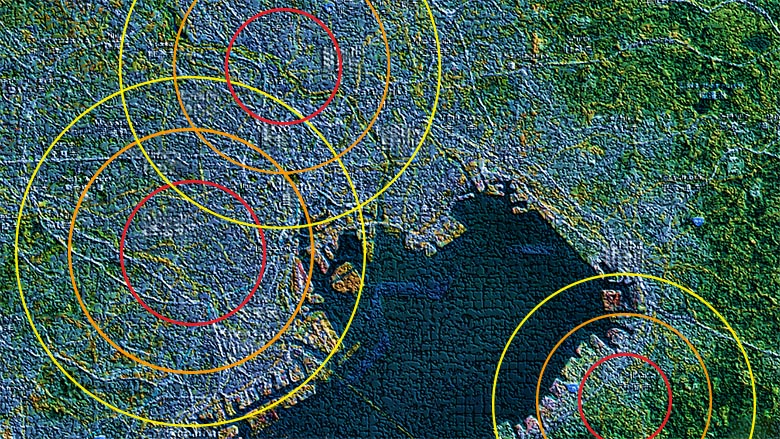
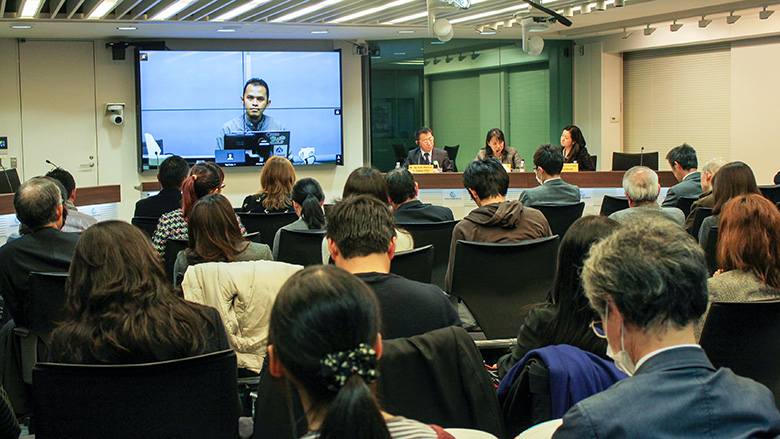
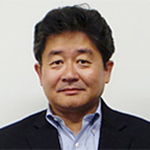 Yasusuke Tsukagoshi
Yasusuke Tsukagoshi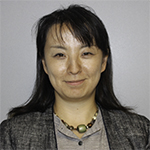 Keiko Saito
Keiko Saito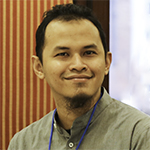 Yantisa Akhadi
Yantisa Akhadi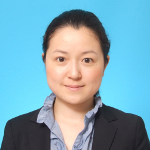 Keiko Sakoda Kaneda
Keiko Sakoda Kaneda